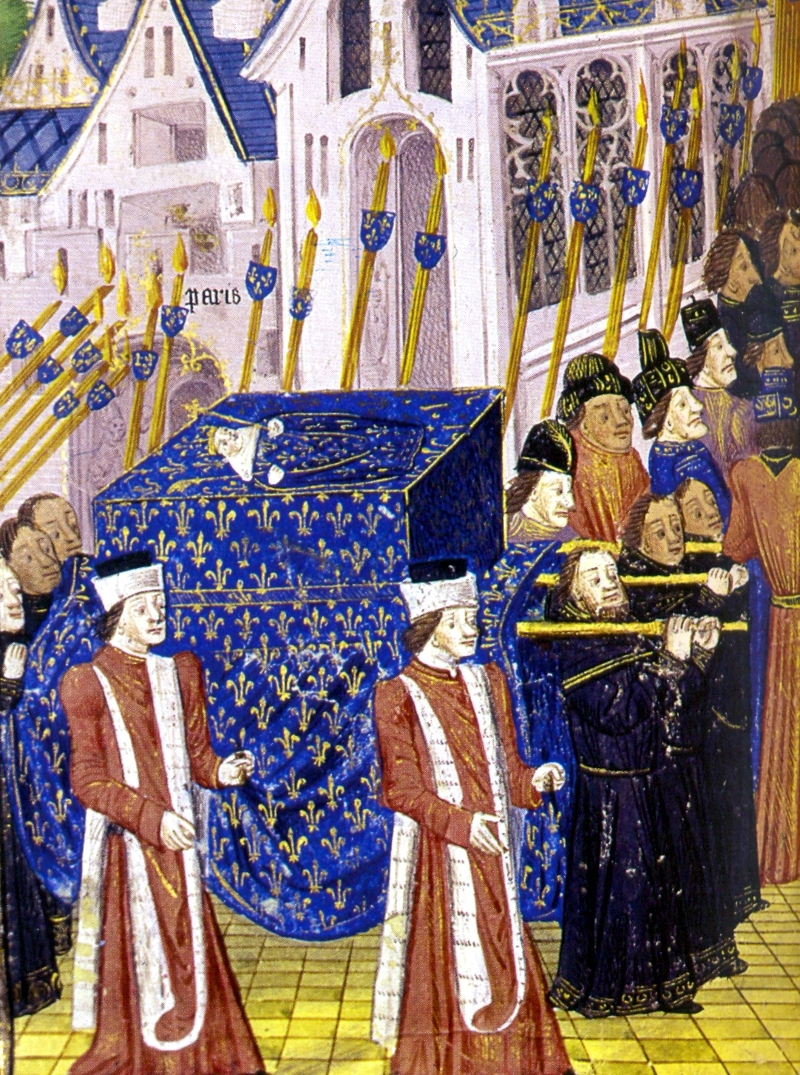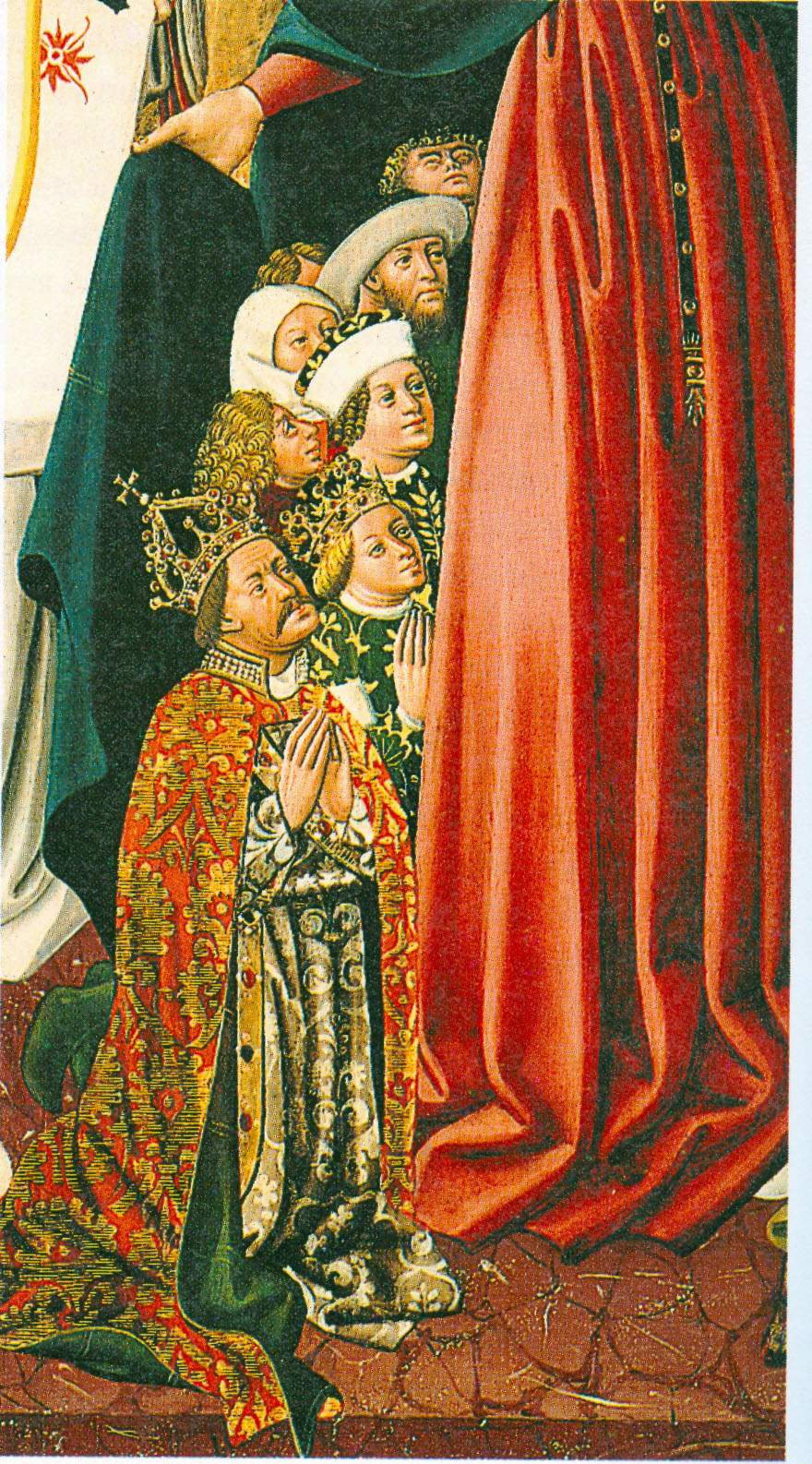|
List Of People Known As The Posthumous
"The Posthumous" is an epithet for: * Charles of Austria, Bishop of Wroclaw (1590–1624), Prince-Bishop of Wrocław (Breslau), Prince-Bishop of Brixen, Grand Master of the Teutonic Order and ruler of the Bohemian County of Kladsko * John I of France (born and died in 1316), King of France and Navarre * Ladislaus the Posthumous (1440–1457), Duke of Austria and King of Hungary, Croatia and Bohemia * Stephen the Posthumous (1236–1271), son of King Andrew II of Hungary and father of King Andrew III of Hungary * Theobald I of Navarre Theobald I (french: Thibaut, es, Teobaldo; 30 May 1201 – 8 July 1253), also called the Troubadour and the Posthumous, was Count of Champagne (as Theobald IV) from birth and King of Navarre from 1234. He initiated the Barons' Crusade, was famous ... (1201–1253), King of Navarre and Count of Champagne {{DEFAULTSORT:Posthumous Lists of people by epithet ... [...More Info...] [...Related Items...] OR: [Wikipedia] [Google] [Baidu] |
Epithet
An epithet (, ), also byname, is a descriptive term (word or phrase) known for accompanying or occurring in place of a name and having entered common usage. It has various shades of meaning when applied to seemingly real or fictitious people, divinities, objects, and binomial nomenclature. It can also be a descriptive title: for example, Pallas Athena, Phoebus Apollo, Alfred the Great, Suleiman the Magnificent, and Władysław I the Elbow-high. Many English monarchs have traditional epithets: some of the best known are Edward the Confessor, William the Conqueror, Richard the Lionheart, Æthelred the Unready, John Lackland and Bloody Mary. The word ''epithet'' can also refer to an abusive, defamatory, or derogatory phrase. This use as a euphemism is criticized by Martin Manser and other proponents of linguistic prescription. H. W. Fowler complained that "epithet is suffering a vulgarization that is giving it an abusive imputation." Linguistics Epithets are sometimes at ... [...More Info...] [...Related Items...] OR: [Wikipedia] [Google] [Baidu] |
Charles Of Austria, Bishop Of Wroclaw
Charles of Austria (german: Karl von Österreich; 7 August 1590 – 28 December 1624), nicknamed ''the Posthumous'', a member of the Imperial House of Habsburg, was Prince-Bishop of Wrocław (Breslau) from 1608, Prince-Bishop of Brixen from 1613, and Grand Master of the Teutonic Order from 1618 until his death. In 1621 he also received the Bohemian County of Kladsko as a fief from the hands of his brother, Emperor Ferdinand II. Life Born in Graz, Styria, Charles was the youngest son of Archduke Charles II of Austria (1540–1590), ruling over the Inner Austrian estates of the Habsburg monarchy, and his consort Maria Anna (1551–1608), daughter of the Wittelsbach duke Albert V of Bavaria. Born less than a month after his father's death, he was nicknamed "Charles the Posthumous" (''Karl der Posthume''). As the last of 15 siblings, Charles, like his brother Leopold V was destined for an ecclesiastical career. In 1602 he was appointed to a canonry of Salzburg Cathedral and in ... [...More Info...] [...Related Items...] OR: [Wikipedia] [Google] [Baidu] |
John I Of France
John I (15 – 20 November 1316), called the Posthumous (, oc, Joan Ièr lo Postume), was King of France and Navarre, as the posthumous son and successor of Louis X, for the five days he lived in 1316. He is the youngest person to be king of France, the only one to have borne that title from birth, and the only one to hold the title for his entire life. His reign is the shortest of any undisputed French king. Although considered a king today, his status was not recognized until chroniclers and historians in later centuries began numbering John II, thereby acknowledging John I's brief reign. John reigned for five days under the regency of his uncle, Philip V of France, until his death on 20 November 1316. His death ended the three centuries of father-to-son succession to the French throne. The infant king was buried in the Basilica of Saint-Denis. He was succeeded by his uncle, Philip, whose contested legitimacy led to the re-affirmation of the Salic law, which excluded women ... [...More Info...] [...Related Items...] OR: [Wikipedia] [Google] [Baidu] |
Ladislaus The Posthumous
Ladislaus the Posthumous( hu, Utószülött László; hr, Ladislav Posmrtni; cs, Ladislav Pohrobek; german: link=no, Ladislaus Postumus; 22 February 144023 November 1457) was Duke of Austria and King of Hungary, Croatia and Bohemia. He was the posthumous son of Albert of Habsburg with Elizabeth of Luxembourg. Albert had bequeathed all his realms to his future son on his deathbed, but only the estates of Austria accepted his last will. Fearing an Ottoman invasion, the majority of the Hungarian lords and prelates offered the crown to Vladislaus III of Poland. The Hussite noblemen and towns of Bohemia did not acknowledge the hereditary right of Albert's descendants to the throne, but also did not elect a new king. After Ladislaus's birth, his mother seized the Holy Crown of Hungary and had Ladislausknown as Ladislaus V in Hungarycrowned king in Székesfehérvár on 15 May 1440. However, the Diet of Hungary declared Ladislaus's coronation invalid and elected Vladislaus king. A c ... [...More Info...] [...Related Items...] OR: [Wikipedia] [Google] [Baidu] |
Stephen The Posthumous
Stephen the Posthumous ( hu, Utószülött István; 1236–1271) was the posthumous son of King Andrew II of Hungary by his third wife, Beatrice d'Este. He was regarded as bastard son of infidelity by his much older half-brothers, including King Béla IV of Hungary, and was not allowed to receive ducal revenues from Hungary to which he would have been entitled as son of a Hungarian king. He was first married to a widow, Isabella Traversari, by whom he had a short-lived son named Stephen. His second wife was Tomasina Morosini. Their son would later become King Andrew III of Hungary. Early years The elderly Andrew II, who had been widowed recently for the second time, married the 23-year-old Beatrice d'Este in Székesfehérvár on 14 May 1234, even though his sons – Béla and Coloman – were sharply opposed to his third marriage. She was pregnant, when Andrew II died on 21 September 1235. The king's eldest son Béla IV ascended the Hungarian throne shortly thereafter. Béla an ... [...More Info...] [...Related Items...] OR: [Wikipedia] [Google] [Baidu] |
Theobald I Of Navarre
Theobald I (french: Thibaut, es, Teobaldo; 30 May 1201 – 8 July 1253), also called the Troubadour and the Posthumous, was Count of Champagne (as Theobald IV) from birth and King of Navarre from 1234. He initiated the Barons' Crusade, was famous as a trouvère, and was the first Frenchman to rule Navarre. Rule of Champagne Regency of Champagne Born in Troyes, he was the son of Theobald III of Champagne and Blanche of Navarre, the youngest daughter of Sancho VI of Navarre. His father died less than a week before he was born, and Blanche ruled the county as regent until Theobald turned twenty-one in 1222. He was a notable trouvère, and many of his songs have survived, including some with music. The first half of Theobald's life was plagued by a number of difficulties. His uncle, Count Henry II, had left behind a great deal of debt, which was far from paid off when Theobald's father died. Further, Theobald's right to the succession was challenged by Henry's daughter Philippa an ... [...More Info...] [...Related Items...] OR: [Wikipedia] [Google] [Baidu] |


